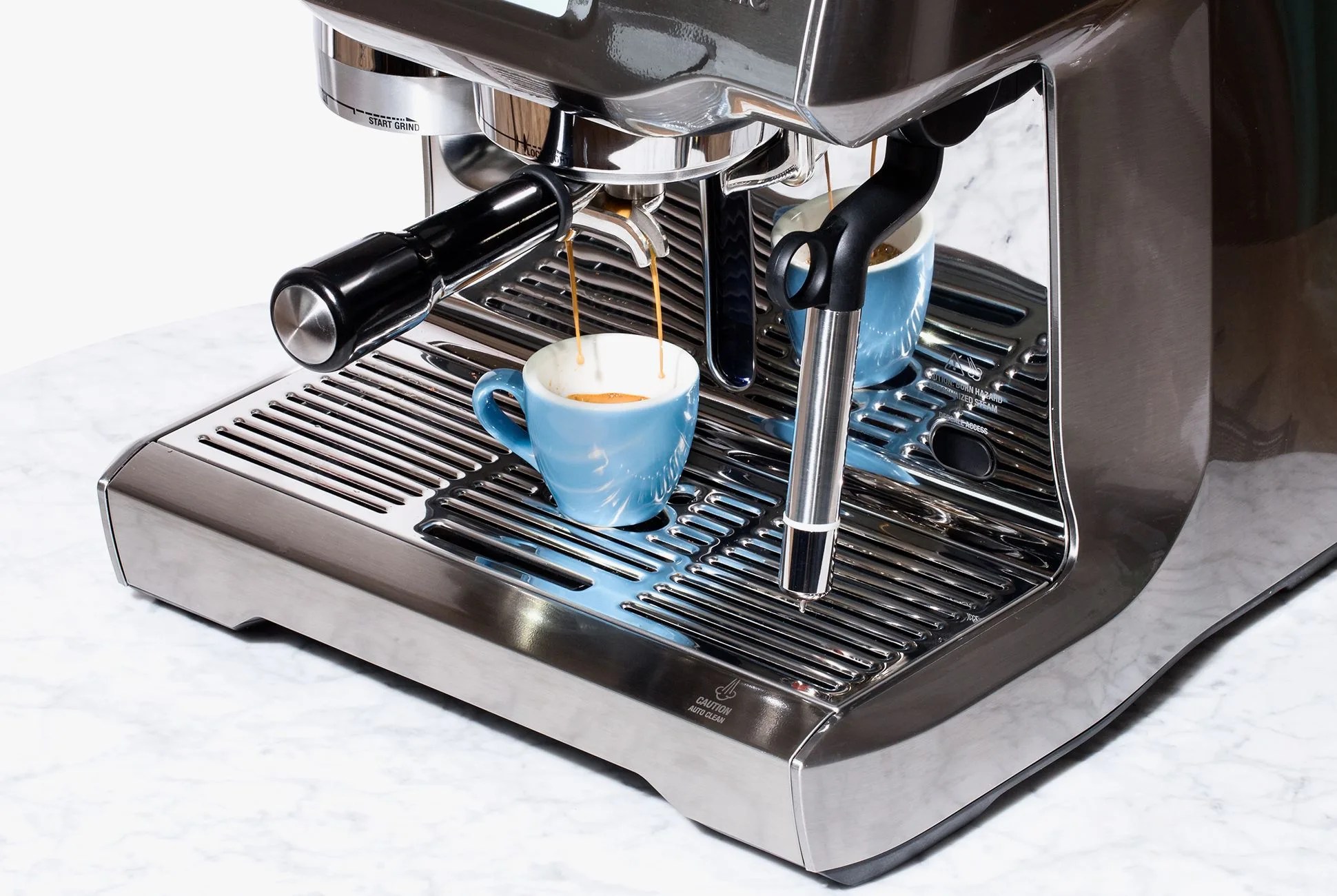For Australian home appliance company Breville, introducing revolutionary new products and groundbreaking technologies is common practice. It’s credited with inventing the sandwich press and the juice extractor, while the Breville 800 Class espresso machine, introduced in 2003, helped bring espresso making into the home kitchen. By 2005, espresso machines were outselling drip coffee machines and percolators in Australia.
Despite the popularity of single-serve brewers and super automatic espresso machines, the espresso they yield doesn’t hold a candle to a manually pulled shot. “They make a not-super-delicious coffee because they can’t get all the variables in the right place,” says Kyle Ramage, winner of the 2017 U.S. Barista Cup Championship. “You can control the grind somewhat, and you can control the water temperature somewhat, but [they’re limited].” With its Oracle series, Breville has been pushing the limits of what a super automatic espresso machine can be.
The latest addition to its line, the Oracle Touch, yields drinks that are uncannily close to barista-brewed espresso. The body of the machine is nearly identical Breville’s earlier dual boiler models, but features a full-color touchscreen interface in lieu of backlit LCDs and buttons. Settings for five common espresso drinks — pure espresso, Americano, latte, flat white and cappuccino — come standard, and the machine can save up to eight custom drink formulas.
Grind size, water temperature, shot size, milk temperature and froth level can all be dialed in to meet according to personal preferences and specific coffee bean. Precision tinkering aside, the Oracle Touch is built with an Over Pressure Valve — a functionality previously restricted to commercial machines — that controls shot pressure to prevent bitterness, and enables a low-pressure infusion of water to produce an even extraction with thick, caramel-hued crema.
Milk, in the past, has been the hardest thing to get right at home.
But it’s the steam wand, according to Andrew Oberholzer, roaster and cafe manager at Joe Coffee in New York, that puts the Oracle Touch in a category of its own. “You can get it right every time without having any experience,” he says. “You just put the milk in, center the wand and it does its thing. It textures with microfoam, so you can pour a latte.” Microfoam mixes with espresso to produce the velvety mouthfeel that signifies a quality espresso drink. By contrast, most super automatic espresso machines froth milk in such a way that it just sits atop a cup of espresso.
“Milk, in the past, has been the hardest thing to get right at home — a lot of milk frothers make this really blown-out, bubbly milk,” Oberholzer says. “With this, you’re actually getting microfoam that’s possible to pour latte art with, if you know what you’re doing. I don’t know too many other home machines where you could actually steam that kind of quality of milk without even having to do anything.” The steam wand on the Oracle Touch reads the temperature of the milk being used and, according to the specific type of drink being made, calibrates steam pressure and temperature accordingly.


